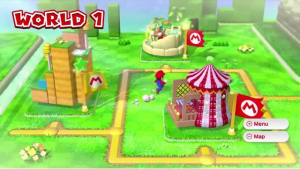The market of video games has diversified over the last eight or so years. The days of only having AAA and AA games available are gone. Today, you can find games ranging from free, all the way up to $60 and more. The perception of value has shifted in all areas of the market, and consumers are looking at $60 games differently. With the recent trouble of No Man’s Sky, it’s time to look at what $60 is supposed to get you.
Premium Problems:
Thanks to game devaluation and the market opening up, the preconception of “shovelware” has changed. In the past, people expected that $20 and less games were inferior to the $40+, and they were right. Our options were either the AAA or AA market; anything else simply did not measure up.
As we have seen, things are different today. Game devaluation has caused a reversal of this trend. Today, many Indie developers are releasing amazing works at $20 or less. Not only that, but consumers are now expecting quality at any price point. Price is no longer a true signifier of game quality; making the game industry unique in this regard.
Consumer goods are measured by their supposed quality weighted by the market/sellers. When you shop at a Whole Foods or Wegmans, you are paying a higher premium for products that are supposed to be better. Same with restaurants; the steak you get at a five star restaurant should be a higher quality than a diner. Because of that difference, the consumer expects to pay more and get more in return.
However, we are seeing a completely different trend with video games. I can play a game free and get dozens of hours of entertainment; or I can play a $40 game for 8 to 12 hours. Throw in game sales and this becomes even more confusing.
I know people bought Doom for $60 at retail, I however spent $35, and the game was even discounted after that to $30.
We have one of the best games of 2016 discounted at 50% before 6 months have passed.
When you have an industry without any pricing measure of quality, it can lead to situations such as with No Man’s Sky.
The Sky is Falling:
No Man’s Sky was conceived as an indie game until it was picked up by Sony. After that, the game was given the full AAA treatment in terms of press and marketing. When the game was finally released, gamers were dismayed to find that the game was lacking in detail.
No Man’s Sky simply wasn’t worth the $60 price tag, and we talked about it recently how things could have gone differently if it was priced at $30. Spending $60 on a game is a big deal; that is currently the highest amount someone can charge for a non-special edition title.
When you’re pricing your game at that level, people expect more, because they are paying more. We’ll come back to talking about the “more” in a minute.
No Man’s Sky was an attempt at releasing an Indie game at full retail, and we can agree that it definitely didn’t work.
With that said, No Man’s Sky’s failure raises an important question: What games are worth $60?
Video Game Appraiser:
Trying to put a price tag on a video game has always been a tough job. Every video game is different: From design, philosophy, content and their team. This isn’t like comparing apples to oranges, but selling every kind of fruit juice as apple juice.
We have one of the best games of 2016 discounted at 50% before 6 months have passed.
The problem is that there is no standard for what constitutes the price of a game. Should we say that multiplayer adds $20 to the price tag? Is a singleplayer campaign worth $10? What about taking money off depending on the popularity or demand of the genre.
Imagine if we say that because there is a Call of Duty every year, every new FPS must have a $15 deduction on its price. Or better yet: Because main branch Mario games only happen every few years, they get a $20 price tag bump.
Everyone wants to get what their game is worth, but we have no way of deciding just what that “worth” is. Just as the lack of transparency can affect kickstarter projects, so can it affect what people think your game is worth.
There is one final topic left to talk about today and it’s a big one: Why are game so expensive?
Lowering Cost:
I’ll be dedicating a critical thought to this part, so I won’t go into too much detail here. The short of it is that despite what publishers and developers tell you, the cost of making games should have gone down.
Digital distribution cuts back on manufacturing, shipping, and housing/displaying games. Game manuals have become lower quality to cut back on printing costs. Game engines have become easier to work with and less expensive to use.
In the old days, games were very expensive due to the costs surrounding them and the lack of games on the market. Logic should dictate the ugly truth to developers and publishers: Games are not worth $60 today. With games being released daily, scarcity is no longer a factor, and we already know that games should be cheaper to produce. Publishers will say that marketing is expensive, but that’s not related to making a game.

When a series needs to sell 5 million copies to stay afloat, something is very off in terms of the budget
I know what you’re going to ask next: How much should games cost? I honestly have no idea. We once again return to the problem at hand: There are no defining measures of value to a video game.
With multiplayer for example, I’ve seen $60 games that are just singleplayer experiences and $10 or less with multiplayer modes.
Valuing Games:
The Game Industry is no longer the same place as it was 20 or even 10 years ago. You have teams of less than 10 people putting out quality games that can stand next to those put out by major studios. With the “race to the bottom” further impacting things, we’re not done talking about this.
One thing is for sure, everyone needs to start getting on the same page, or we’re going to see developers price themselves right out of the market. If you’re looking for coupons and deals on games and more, visit Don’t Pay Full.
If you enjoyed this post, please consider donating to the Game-Wisdom Patreon campaign. Your donations can help to keep the site going and allow me to produce more great content. Follow me on Twitter @GWBycer, and you can find daily video content on the Game-Wisdom YouTube channel.





